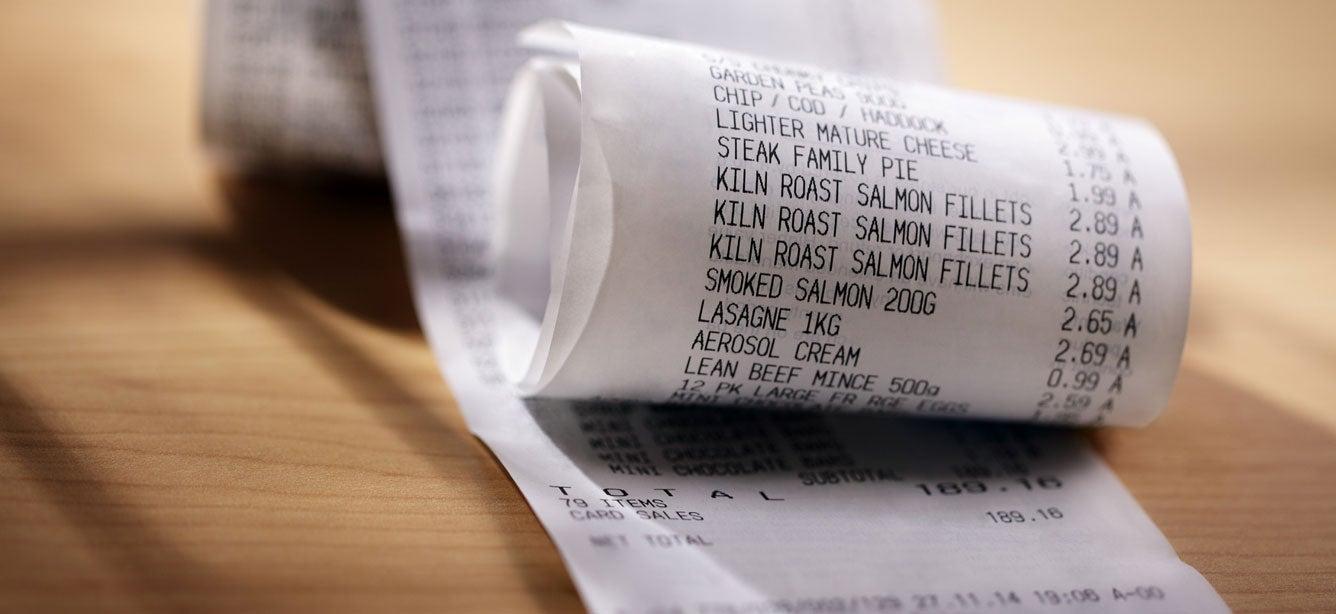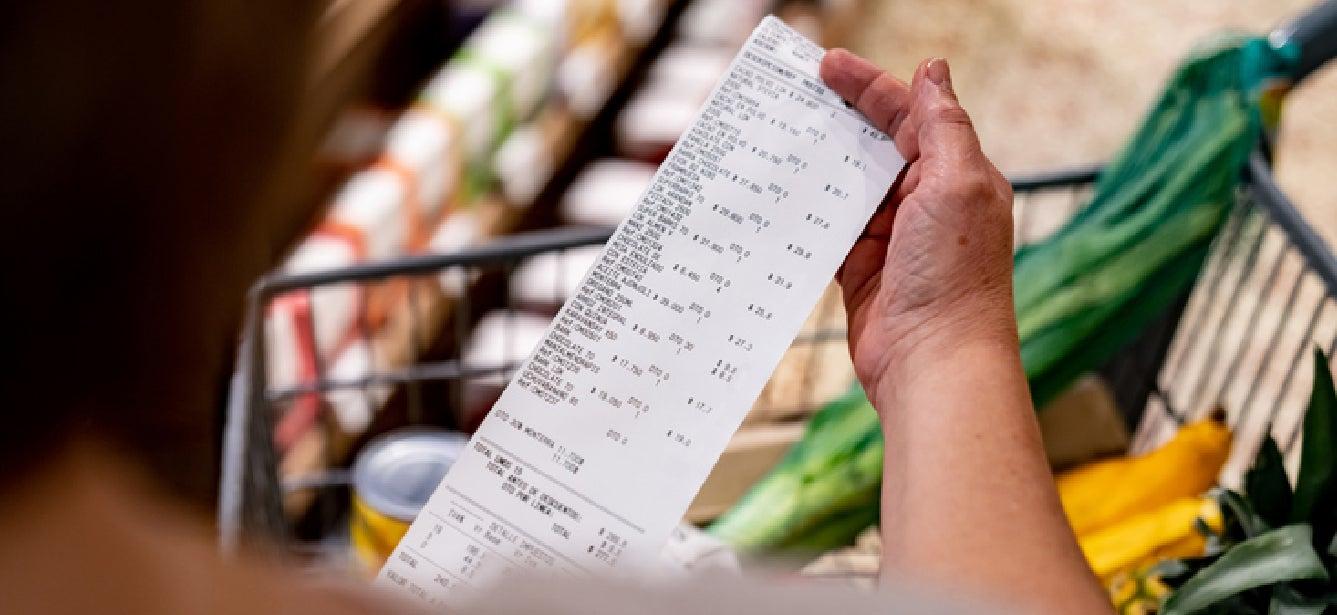
Related Topics
You know what isn’t keeping up with rising costs? Social Security. The 2026 COLA is just 2.8%, barely enough to make a dent in the higher Medicare premiums and deductibles coming our way, according to NCOA’s President & CEO Ramsey Alwin.
“Once again, older adults will have to make heart-wrenching decisions about whether to spend their fixed incomes on health care, food, or housing,” she said.
Now, with the government shutdown over and full SNAP funding restored through September 2026, there’s some relief, but grocery prices are still high, and older adults may still feel the pinch when planning their monthly budgets.
Facebook user Leslie Kim agrees. “Especially if you have to buy laundry detergent or toilet paper.”
“It’s impossible to stay on budget with limited income. Some weeks mean beans and rice,” Kim said.
There are ways to take control, however. One of the most empowering and effective things each of us can do to save money on food is to create an informed grocery budget. Here, we show you how to do it.
How to create a monthly food budget
Each month, the U.S. Department of Agriculture (USDA) publishes four Food Plans that provide an estimate for monthly and weekly grocery spending at different budget points: a Thrifty Food Plan, Low-Cost Food Plan, Moderate-Cost Food Plan, and Liberal Food Plan. Adjusted each month for inflation, these budgets are based on the average cost of nutritious, home-prepared meals and snacks.
What is a reasonable budget for groceries? It depends. Costs may vary widely based on what region of the country you live in, where you shop for food, and whether you shop online or in person. However, the USDA budget samples can provide a helpful benchmark when determining what you can expect to spend on groceries. For example, in August 2025, the Low-Cost weekly food budget for older adults age 51–70 was $67.00 for a man and $60.10 or a woman.2
This online Grocery Budget Calculator, based on the USDA Low-Cost Food Plan, can help you determine how much you can expect to spend each week on groceries for your household. Just enter some simple information, such as your household size, the genders of people who live there, and your basic eating habits. The calculator will generate a baseline figure that you can build your grocery budget on. Keep in mind that USDA food plans do not include restaurant or take-out meals.
What are some other tips for older adults on creating a grocery budget?
If you’re wondering how to create a monthly food budget, another handy rule of thumb is to use the 50/30/20 rule. This simple and intuitive grocery budget formula suggests that you spend your net (after-tax) monthly income this way:
- 50% for living essentials (things like groceries, housing, transportation, and health care.)
- 30% for wants (“discretionary spending” on extras like restaurant meals, entertainment, and leisure travel.)
- 20% for savings and debt repayment (obligations like credit cards, auto loans, and mortgages, for example.)
Budgets are meant to have some flexibility, and you may need to tweak the formula above to fit your unique circumstances. For example, if you have high medical expenses that don’t leave enough left over to buy enough food, it makes sense to shift funds from your “wants” category to your living expenses column.
How to grocery shop efficiently on a budget
Once you’ve gone through the effort to create a personalized grocery budget, the trick is to stick with it. This can be easier said than done—but the payoff is worth it. Here are some money-saving tips for grocery shopping that can help you stay within your budget.
- Make a list: If you’re wondering, “How can I spend less at the grocery store?”, start with making a weekly list either in a notebook or on your phone. Having a list can help eliminate the temptation to buy things you don’t need (hello, bakery cupcakes). Bring your grocery list with you when you shop and buy only what’s on it.
- Don’t overbuy: Be sure to check your pantry and fridge before you make your grocery list. That can help prevent you from buying things you already have. You want to buy only what you can reasonably use within the week.
- Prepare meals from scratch: As much as possible, try to avoid convenience items (like pre-chopped vegetables) and processed foods. These tend to be more expensive and less healthy than whole foods. If you have the time and ability to cook meals from scratch, shop the store’s perimeters for ingredients.
- Buy in-season produce: If you can, plan your meals around in-season produce; it generally costs less and tastes better during the growing season. For example, buy strawberries only in the spring and summer, and stick to the summertime for buying corn. The USDA offers a guide to help you enjoy the freshest, most affordable produce all year round. Many Farmers Markets accept SNAP, too, when those benefits are available.
- Create a meal routine: Meal planning can help you save money on groceries, since you know in advance exactly what you need. One way to do this is to create a predictable meal routine. For example, taco night on Tuesdays, pasta night on Sundays, and so on. Focusing on healthy, whole foods-based meals is even better. Want to avoid getting stuck in a rut? Find recipe inspirations for spring, summer, and fall.
- Trim costs with coupons: Sunday newspaper inserts, store promotional mailers, and store apps are all good sources for money-saving grocery coupons. Walmart, for example, lets you find and print out coupons directly from their website. However, be sure to use coupons only for products you regularly use. Resist the temptation to buy something you don’t need just because you have a coupon, especially if it’s a product you’ve never tried before.
- Find out if you’re eligible for food assistance: It’s well worth applying for the Supplemental Nutrition Assistance Program (SNAP) if you think you qualify. That way, you’ll be well positioned if and when the federal government re-opens. In the interim, many states are working to fill the funding gaps. (As a refresher, SNAP is a government safety-net program that helps millions of Americans age 65+ stretch our grocery budgets further.) When available, the average SNAP benefit for a one-person senior household is $188 per month (about $6.16 per day),3 which can be used to buy everything from fruits, vegetables, meat, and poultry to snack foods and soft drinks.
For Joyce Lee, age 78, SNAP has been much-needed lifeline.
“After losing my husband, things got tight,” Lee said. “In most cases, medical bills and household expenses come first, and food isn’t of that much importance—until you need to eat.”
Checking your SNAP eligibility is fast and simple with our online screening tool. Just visit BenefitsCheckUp.org and enter your ZIP code to get started. If you need additional help, NCOA will even connect you with a trained benefits counselor who can guide you through the SNAP application process.
Sources
1. Scott Horsley. Grocery prices have jumped up, and there’s no relief in sight. Weekend Edition Saturday (NPR). September 19, 2025. Found on the internet at https://www.npr.org/2025/09/19/nx-s1-5539547/grocery-prices-tariffs-food-inflation
2. USDA. Official USDA Food Plans – Cost of Food at Home at Three Levels, U.S. Average, August 2025. September 2025. Found on the internet at https://fns-prod.azureedge.us/sites/default/files/resource-files/cnpp-costfood-3levels-august2025.pdf
3. USDA. Characteristics of Supplemental Nutrition Assistance Program Households: Fiscal Year 2023. April 2025. Found on the internet at https://fns-prod.azureedge.us/sites/default/files/resource-files/snap-FY23-Characteristics-Report.pdf




